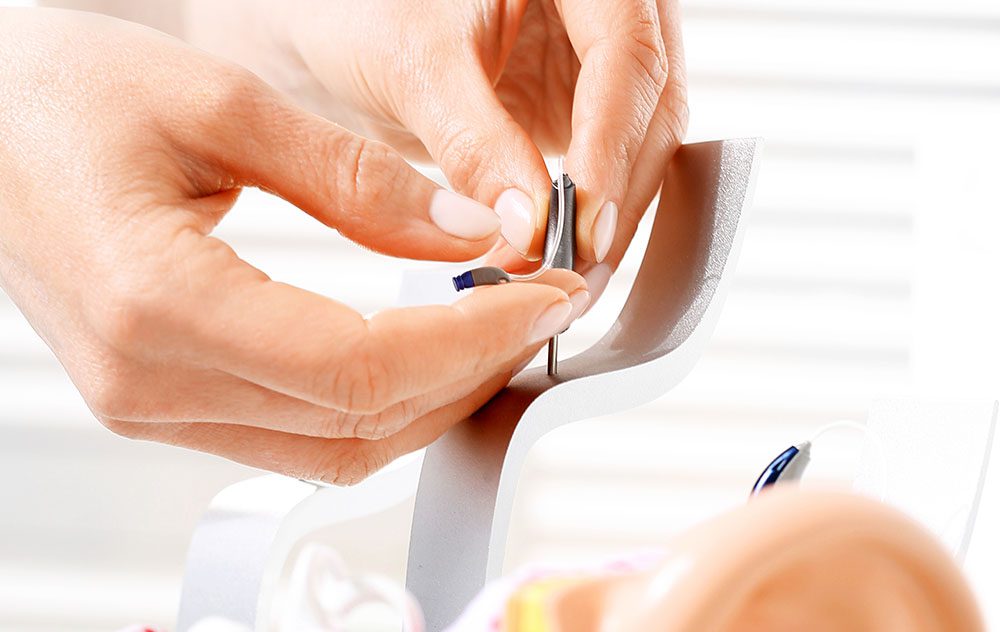The world of hearing care has come a long way. Decades ago, hearing aids were bulky, limited in function, and often stigmatized. Today, thanks to advances in technology, hearing aid users have access to sleek, discreet, and highly sophisticated devices that do far more than simply amplify sound. Alongside this progress, modern hearing aid service options have also evolved, offering patients greater customization, convenience, and long-term support than ever before.
In this article, we’ll explore how technology has revolutionized hearing aids, the range of service options now available, and what patients can expect when working with a professional audiologist to care for their hearing health.
The Evolution of Hearing Aids: From Basic Amplifiers to Smart Devices
To understand how hearing aid service has transformed, it helps to first look at how hearing aids themselves have changed.
- Early designs: Early hearing aids were essentially amplifiers. They made everything louder, whether it was the voice you wanted to hear or the background noise you didn’t.
- Analog hearing aids: Later models allowed for some sound filtering and adjustment, but they were still limited in customization.
- Digital hearing aids: The digital revolution brought advanced processing that could separate speech from noise, enhance clarity, and provide more personalized sound experiences.
- Smart hearing aids: Today’s devices integrate Bluetooth, smartphone apps, artificial intelligence, and even health tracking, making them true “wearable technology” rather than just medical devices.
As hearing aids became more advanced, the services surrounding them had to adapt as well. Modern hearing aid service is no longer just about fittings and repairs it’s about creating a comprehensive care experience tailored to each individual.
How Technology Has Changed Hearing Aid Service
1. Precise Hearing Evaluations with Digital Tools
Modern hearing aid service begins with advanced diagnostic technology. Audiologists now use computer-assisted testing, real-ear measurements, and speech-in-noise evaluations to create a more accurate picture of your hearing ability. These precise results help determine the right hearing aid model and settings for your lifestyle.
2. Personalized Programming with Software
Unlike older hearing aids, which were adjusted manually, today’s devices are programmed using specialized software. This allows audiologists to:
- Fine-tune sound frequencies based on your unique hearing loss profile.
- Adjust settings for different environments (quiet home, busy restaurant, outdoor activity).
- Update and reprogram devices over time as hearing needs change.
This personalization ensures hearing aids provide optimal performance in real-life situations.
3. Remote Hearing Aid Service Options
One of the biggest changes in recent years is the ability to access hearing aid service remotely. Through smartphone apps and secure cloud connections, audiologists can adjust your device settings without you needing to visit the clinic. This is especially beneficial for:
- Patients with mobility challenges.
- Those living in rural or underserved areas.
- Individuals with busy schedules who prefer quick virtual check-ins.
Remote care doesn’t replace in-person visits entirely, but it adds a level of convenience and accessibility that wasn’t possible before.
4. Integration with Smartphones and Apps
Most modern hearing aids connect seamlessly with smartphones, allowing users to:
- Adjust volume and settings through a mobile app.
- Stream phone calls, music, or podcasts directly into their hearing aids.
- Use geotagging features that automatically switch settings based on location (e.g., home vs. office).
This direct control empowers patients to be active participants in their hearing health, supported by their audiologist when needed.
5. AI and Machine Learning in Hearing Aids
Cutting-edge devices now incorporate artificial intelligence (AI) to learn user preferences and adapt automatically. For example, your hearing aids may detect that you often increase the volume in noisy restaurants, and over time, they’ll start doing it for you.
For audiologists, this means hearing aid service involves guiding patients on how to get the most from these smart features, while still providing human expertise to refine and customize performance.
6. Preventive Maintenance with Smart Technology
Some hearing aids now provide alerts for low batteries, wax buildup, or device malfunctions. This predictive technology allows patients and providers to address issues before they become serious. Service has shifted from being primarily reactive (fixing problems after they occur) to proactive (preventing problems in the first place).
Expanded Service Options in Modern Hearing Care
Technology has not only improved hearing aids but also broadened the scope of hearing aid service offerings. Today, patients can expect a comprehensive care package that includes:
1. In-Clinic Services
- Diagnostic hearing evaluations with advanced equipment.
- Custom fittings to ensure comfort and effectiveness.
- Real-ear verification to confirm the device is delivering the right sound levels.
2. Remote Services
- Virtual consultations for quick adjustments.
- App-based communication to share feedback with your audiologist.
- Teleaudiology for patients who can’t easily visit a clinic.
3. Educational Support
Audiologists now play a bigger role in educating patients about their devices. Many practices provide tutorials on smartphone integration, maintenance, and using accessories such as TV streamers or remote microphones.
4. Long-Term Care Plans
Most providers offer ongoing care packages that include:
- Regular check-ups.
- Software updates.
- Device cleaning and maintenance.
- Warranty and repair services.
This ongoing relationship ensures patients always have access to expert care as their hearing needs evolve.
The Patient Experience: What to Expect
If you’re considering hearing aids, here’s what the modern hearing aid service journey typically looks like:
- Initial Evaluation – A comprehensive hearing test and consultation.
- Device Selection – Choosing the right model based on your hearing loss, lifestyle, and budget.
- Fitting and Programming – Custom programming with real-ear measurements.
- Follow-Up Visits – Adjustments based on real-world feedback.
- Ongoing Support – Regular maintenance, education, and upgrades as needed.
This process emphasizes collaboration between you and your audiologist, with technology making it more personalized and convenient than ever before.
The Future of Hearing Aid Service
Looking ahead, technology promises even more exciting changes in the hearing aid service landscape:
- Cloud-based AI updates that continuously enhance device performance.
- Biometric sensors to monitor health metrics like heart rate and activity levels.
- Augmented reality (AR) integration for enhanced speech clarity in noisy environments.
- Fully automated self-adjusting hearing aids, reducing the need for frequent manual fine-tuning.
Even as devices get smarter, professional audiologists will remain central to the service experience. Their role will increasingly focus on interpreting data, guiding patients in using advanced features, and providing the human touch that technology alone cannot replace.
Final Thoughts
The combination of cutting-edge technology and professional expertise has transformed modern hearing aid service into a truly patient-centered experience. From digital evaluations and personalized programming to remote care and AI-driven features, patients now have more options, flexibility, and control than ever before.
Whether you’re considering hearing aids for the first time or upgrading to a newer model, working with an experienced audiologist ensures you get the full benefit of today’s advanced technology. Hearing aids are no longer just devices they’re gateways to clearer communication, richer experiences, and a better quality of life.









